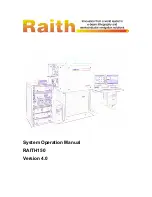
34/52
6
Operation on stairs
6.1 General instructions for operating on stairs
•
Do not operate the stairclimber with a passenger on stairs until you have
received your training certificate from an authorized representative. First
practice using the Liftkar PT without a passenger, then use a load
approximately 40-100 pounds. The care of the passenger is of the utmost
concern. Practice should continue until you have mastered smooth and
continuous movement. PROFESSIONALS should then consider using the
continuous mode, on straight stairs, after they have mastered transporting a
passenger in single step mode.
•
On PT-A model wheelchair wheels must be removed prior to use on the stairs.
•
With all models lean the crossbar on your angled leg, hip or stomach
(see also
6.2).
Your body cushions the force that is applied when there is a change of
load. You only need to use your arms and hands to stabilize and ensure that the
stairclimber does not tilt forwards. Hardly any force is required if the operator is
able to apply this method of operation. Please note though that it is essential
that you always have one hand on the handle, even while the weight is leaning
against you.
•
The crossbar is better than the handle for adjusting the angle of the Liftkar PT.
Proper hand positioning would be one hand on the crossbar and the other hand
on the left or right handle
(with UP/DOWN switch)
.
•
If the passenger has a problem with their back it is recommended that the
slowest climbing speed is used. The Liftkar PT lands more gently at this speed.
In some cases and additional cushion may be required.
•
In an emergency situation the stairclimber can be tilted backwards on the step.
The safety brakes prevent the stairclimber from rolling down the stairs.
•
Please check that the automatic step edge brakes function properly every time
before using the Liftkar PT
(see section 9.4).
•
The attendant should always stand directly above the stair-climber.
















































